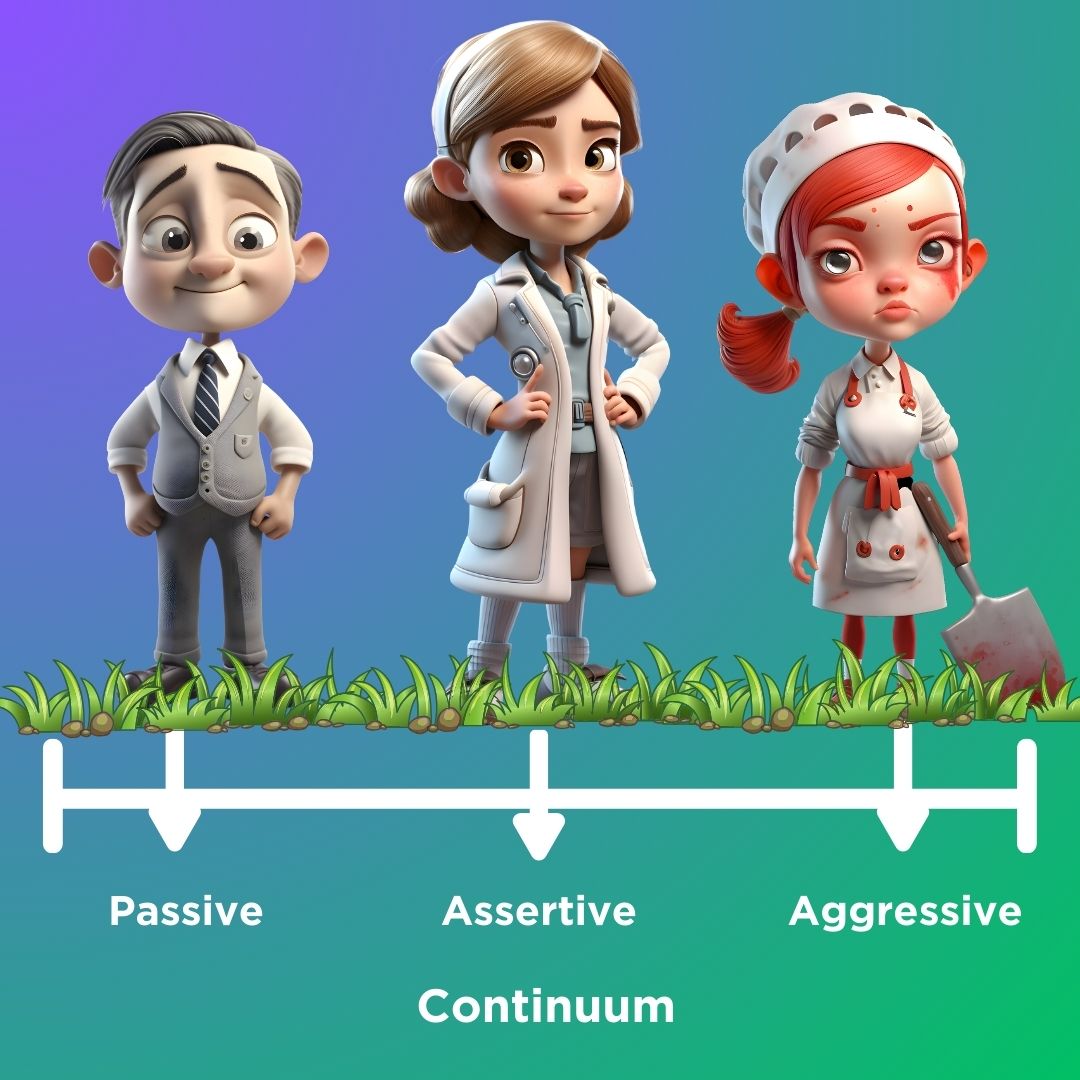 The Passive – Assertive – Aggressive Continuum
The Passive – Assertive – Aggressive Continuum
People usually relate to communication based on one of three styles:
Passive communicators tend to put the rights of others before their own. Passive communicators are apologetic and/or tentative when they speak. They don’t advocate for themselves.
Assertive communicators respect their rights and the rights of others when communicating. This person tends to be direct, but not insulting or offensive. The assertive communicator stands up for their own rights but makes sure the rights of others aren’t affected.
Aggressive communicators, on the other hand, will come across as standing up for their rights while possibly violating the rights of others. This person tends to communicate in a way that tells others they don’t matter or their feelings don’t matter.
| Passive | Assertive | Aggressive | |
| Definition | Communication style in which you put the rights of others before your own, minimizing your own self-worth | Communication style in which you stand up for your rights while maintaining respect for the rights of others | Communication style in which you stand up for your rights but you violate the rights of others |
| Implications to others | My feelings are not important: I don’t matter; I think I’m inferior | We are both important: We both matter; I think we are equal | Your feelings are not important: You don’t matter; I think I’m superior |
| Verbal styles | Apologetic: Overly soft or tentative voice | I statements: Firm voice | You statements: Loud voice |
| Nonverbal styles | Looking down or away: Stooped posture; excessive head nodding | Looking direct: Relaxed posture and movements | Staring, narrow eyes: Tense, clenched fists; rigid posture; pointing fingers |
| Potential consequences | Lowered self-esteem: Anger at self; false feelings of inferiority; disrespect from others; pitied by others | High self-esteem: Self-respect; respect from others; respect of others | Anger from others: Lowered self-esteem; disrespect from others; feared by others |
Most of us tend to have a consistent way we relate to communication, and therefore conflict. The majority of people are either (mostly) passive or (mostly) aggressive with fewer people regularly being assertive. Regardless of where you typically land on the passive – assertive – aggressive continuum, most of us have to work to become more assertive.

